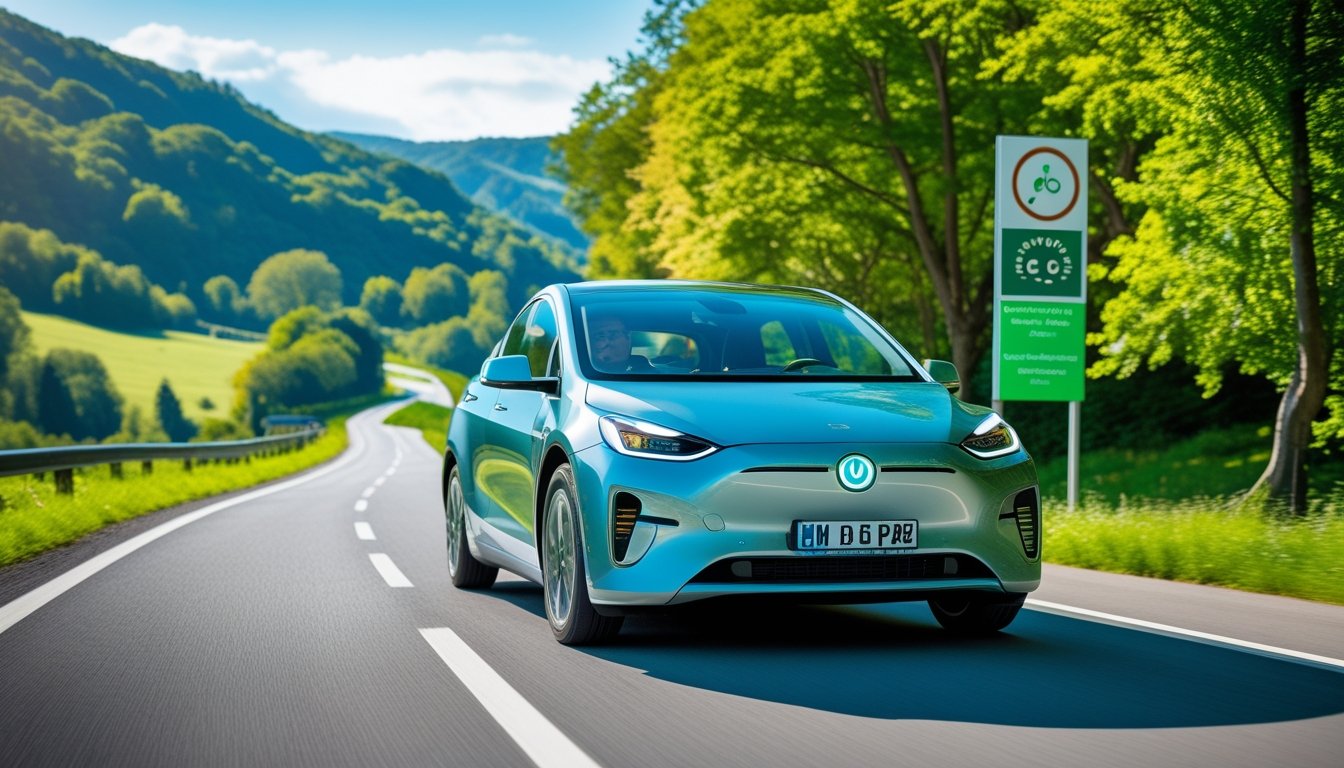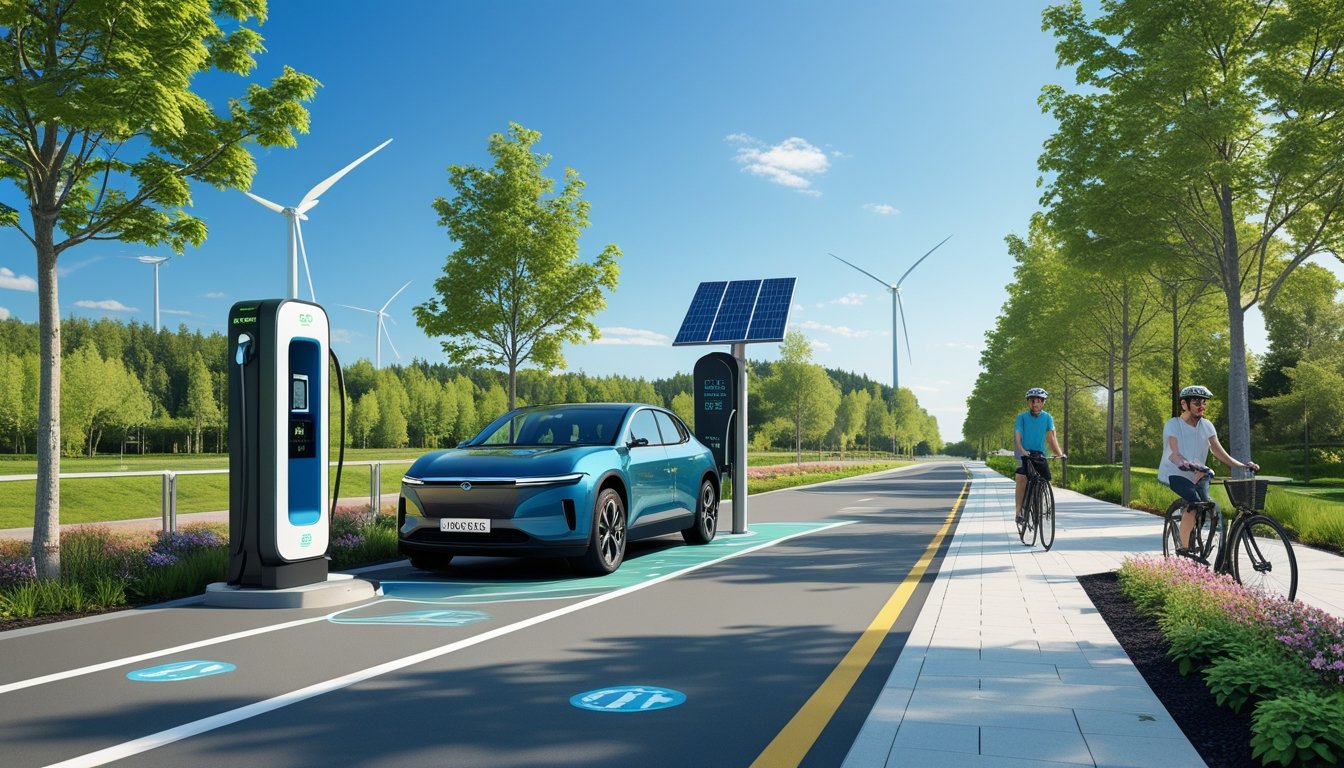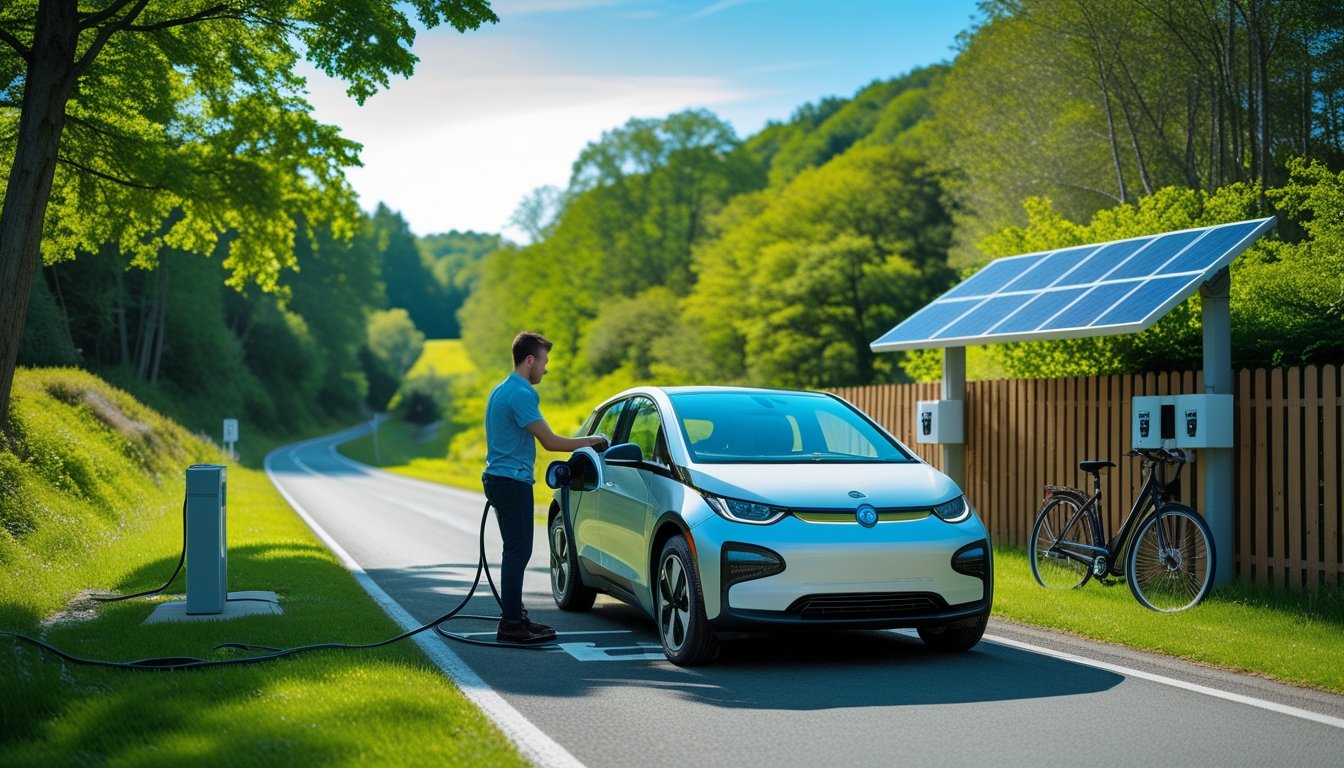Late updated: 29 Aug 2025 08:08
Written by: Sarah Hollister
Eco-Friendly Driving Habits For Sustainable Travel: Tips for a Greener Journey
Driving is an integral part of our daily lives, yet it presents a significant environmental challenge. As awareness about sustainability grows, many of us are seeking ways to make our travel habits more eco-friendly. By adopting eco-friendly driving habits, we can significantly reduce air pollution and mitigate our carbon footprint.

Engaging in sustainable travel doesn't mean giving up comfort or convenience. Practices like maintaining our vehicles properly and opting for fuel-efficient driving techniques can have a substantial impact on our environmental contributions. Furthermore, embracing these habits not only benefits the planet but often leads to cost savings on fuel and vehicle maintenance.
Incorporating alternative modes of transport, such as public transit, cycling, or carpooling, complements our eco-friendly driving efforts. These choices contribute to a more sustainable lifestyle, seamlessly integrating into various travel needs while promoting environmental consciousness.
Key Takeaways
- Eco-friendly driving habits reduce air pollution.
- Sustainable vehicle use lessens environmental impacts.
- Alternative transport modes complement green travel efforts.
Core Eco-Friendly Driving Habits
To maximise our driving efficiency and minimise environmental impact, adopting several key habits is crucial. These habits not only help reduce carbon emissions but also lead to significant fuel savings and improved vehicle longevity.
Maintaining Consistent Speed
Maintaining a steady speed is vital for optimal fuel consumption. Frequent accelerations and sudden braking dramatically increase fuel usage and emissions. We recommend using the vehicle's speedometer to keep track of pace and avoid unnecessary speed fluctuations.
For open road and motorway travel, driving within speed limits often yields the best balance between travel time and fuel efficiency. This habit is central to eco-driving and helps extend the life of the vehicle while contributing to reduced emissions.
Reducing Idling Time
Excessive idling wastes fuel and increases carbon emissions without providing any movement. Modern vehicles are designed to warm up quickly, meaning prolonged idling is largely unnecessary. In traffic, if we anticipate a delay longer than a minute, it is efficient to turn off the engine.
This small action can significantly lower fuel consumption. Additionally, cutting down on idling helps reduce wear and tear on engine components, enhancing the vehicle's longevity.
Utilising Cruise Control
Using cruise control on motorways and open roads maintains consistent speed, which can lead to considerable fuel savings. This feature is particularly useful in environments where speed limits remain constant.
By engaging cruise control, we reduce the need for frequent acceleration and deceleration, leading to more efficient fuel use. It is important to disengage cruise control in variable road conditions, where manual control assures adaptability and safety.
Packing Light and Minimising Vehicle Weight
Minimising the weight our vehicles carry is a simple yet effective way to improve fuel economy. The heavier the vehicle, the more fuel it requires to move. By only carrying necessary items and removing heavy or non-essential loads, we ensure better fuel efficiency.
Roof racks and carriers also create aerodynamic drag, further reducing efficiency, so removing them when not in use is beneficial. Keeping our vehicles as light as possible is an easy step with notable environmental and cost benefits.
Sustainable Vehicle Use and Alternatives

In our transition towards sustainable travel, adopting responsible vehicle use and exploring alternatives is vital. This includes maintaining vehicles efficiently, which can save energy and reduce emissions. We also consider adopting electric and hybrid vehicles, carpooling, and public transportation, along with smart methods to reduce travel frequency.
Regular Vehicle Maintenance Practices
Proper vehicle maintenance plays a critical role in reducing environmental impact. Keeping tyres properly inflated optimises fuel efficiency and decreases carbon emissions.
Routine oil changes and prompt air filter replacements help maintain engine health and performance. A well-maintained vehicle runs more smoothly and efficiently.
By paying attention to small details, like maintaining tire pressure and ensuring clean filters, we not only save money but contribute significantly to a more sustainable future. Practising these habits aids in lowering the vehicle's carbon footprint, supporting our goal for better environmental sustainability.
Choosing Electric or Hybrid Vehicles
Electric vehicles (EVs) and hybrids offer a significant shift towards reducing greenhouse gas emissions. These vehicles, operating on electric power, contribute far less pollution compared to traditional fuel-based cars.
A robust charging infrastructure is essential to support the widespread adoption of EVs. As we shift to these vehicles, it's crucial to consider the availability and convenience of charging options.
Incorporating EVs into our travel habits helps us decrease our carbon footprint. This shift supports our commitment to combating climate change by integrating sustainable transportation solutions in our daily lives.
Adopting Carpooling and Public Transport
Carpooling reduces the number of vehicles on the road, effectively cutting down traffic congestion and emissions. Sharing rides with others, whether to commute or attend events, is a simple yet impactful way to contribute to environmental sustainability.
Public transport systems, such as buses and trains, offer an eco-friendly alternative. These systems generally have a lower per-person carbon footprint compared to individual car usage.
Encouraging the use of public transportation and carpooling helps us reduce our reliance on individual car trips. This practice leads to a more sustainable travel approach, benefiting both the environment and urban planning.
Combining Errands and Choosing Alternative Modes
By combining errands into fewer trips, we reduce our travel frequency, which results in lower fuel consumption and emissions. Planning our routes to accomplish multiple tasks in one go can be both time-efficient and environmentally friendly.
Choosing alternative modes like walking or cycling for short distances also plays a crucial role in supporting sustainable travel practices. These alternatives don’t just cut emissions; they also promote a healthier lifestyle.
Our efforts to reduce unnecessary car use and embracing walking or cycling contribute positively to reducing greenhouse gas emissions, aiding in our collective goal for a greener and more sustainable future.
Frequently Asked Questions

Eco-friendly driving is an essential aspect of sustainable travel. By making conscious choices behind the wheel, we can reduce emissions, enhance fuel efficiency, and improve environmental outcomes.
What techniques can be adopted for more environmentally-friendly driving?
To drive more eco-friendly, we can use techniques like maintaining a steady speed, avoiding rapid acceleration and braking, and reducing idle time. Regular vehicle maintenance, particularly tyre pressure checks, also contributes significantly to efficiency.
How does eco-friendly driving contribute to sustainable travel?
By decreasing fuel consumption and cutting emissions, eco-friendly driving lessens our environmental impact. These practices align with sustainable travel goals, reducing our carbon footprint while on the move.
Can you provide practical examples of eco-friendly driving practices?
Some practical examples include carpooling, using public transportation when possible, and planning routes to avoid traffic congestion. Regularly servicing vehicles ensures they operate optimally, further enhancing eco-friendly performance.
What are the main benefits associated with adopting eco-driving habits?
Adopting eco-friendly habits not only reduces environmental harm but can also save money on fuel and vehicle maintenance. Additionally, these practices often result in safer driving behaviour and longer vehicle lifespan.
How does the graduated driver licensing programme promote safer and more eco-conscious driving?
Graduated driver licensing programmes encourage new drivers to adopt safe and efficient driving habits. By gradually introducing driving privileges, these programmes help instil eco-conscious behaviours from the start.
In what ways does eco-friendly driving impact fuel efficiency and emissions?
Effective eco-driving techniques improve fuel efficiency by reducing unnecessary usage. This directly impacts emissions by lowering carbon dioxide and other harmful pollutants released into the atmosphere, contributing to cleaner air.
